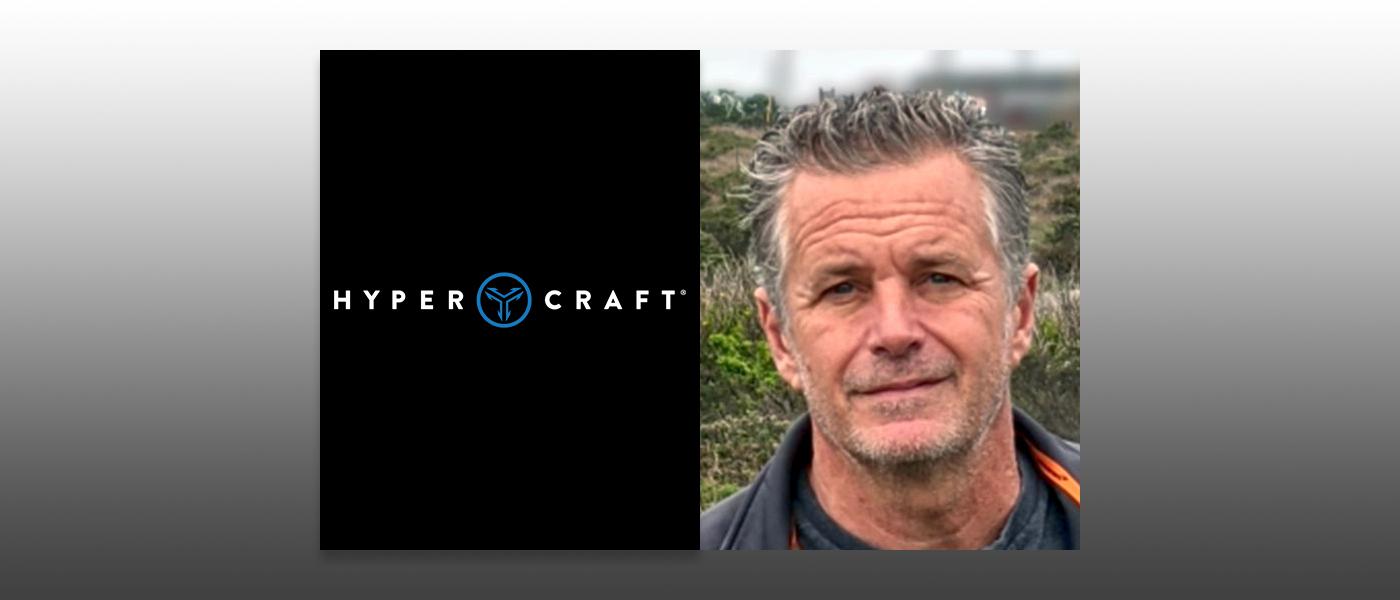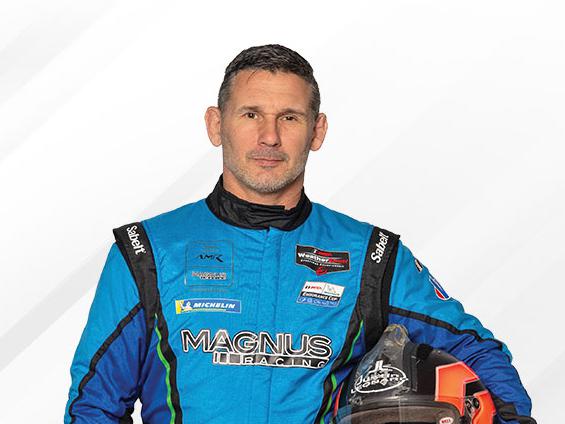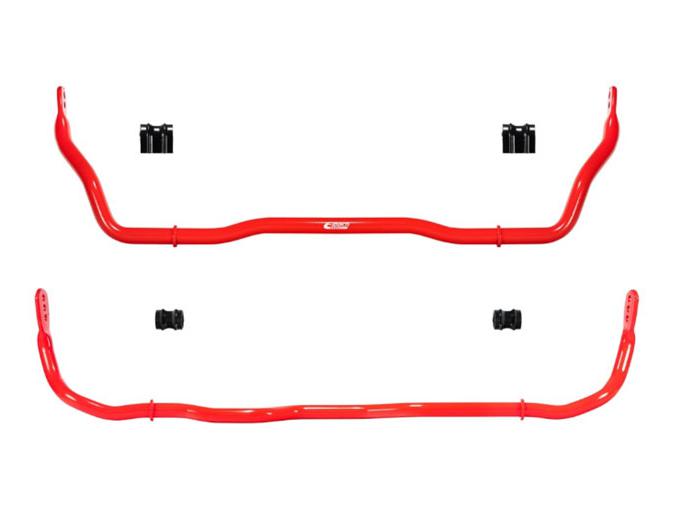Newly Appointed: Kirk Miller

For a new vice president of direct sales, EV powertrain startup Hypercraft chose a veteran of the small-displacement turbo tuner market who later pivoted to EVs.
Kirk Miller’s long journey to recently joining Hypercraft began decades ago. His love of motorsports started on ice-racing tracks in New York state and at the drag strip and motocross track of Old Bridge Township Raceway Park. Miller opened his own race-prep and performance shop when he was just 22 years old.
After moving from New Jersey to California in 1993, Miller became the US director of GReddy Performance Products, just as the sport-compact scene was heating up. He later joined AEM Performance Electronics, where he capped a 24-year run as vice president of sales and marketing.
Miller explained that Hypercraft, which has operations in Utah and California, is designing and engineering complete EV drive solutions for vehicles at a fleet level, including powersports, industrial, military, and marine. Stealth EV, which Hypercraft purchased in 2022, is the aftermarket sales division for both consumers and builders.
He shared his outlook with PRI.
PRI: How did your role at AEM prepare you for this new role at Hypercraft?
Miller: At AEM, most of my focus was on the EV conversion and motorsports segments for roughly three years prior to our selling the company to Holley Performance Products in 2021. I am now reaching out to race, fabrication, and dyno shops that I’ve worked with over the years to show them what we have in the works. I’m also checking in with distributors that are very interested in this segment.
PRI: How does your deep background in the traditional hot rodding and performance market prepare you for the EV performance segment?
Miller: I’ve developed a great set of relationships over the past decades, which I think in some cases gives me a bit of an advantage, because there’s already credibility and trust in place. People in the performance aftermarket that are interested in this segment may look to their trusted suppliers.
PRI: Coming from AEM, which helped develop Ford’s 1,400-hp electric Cobra Jet Mustang, you’ve seen the potential for EV performance for the hot rodding world. How would you describe the level of enthusiasm for this market?
Miller: Enthusiasm and excitement are currently somewhat polarized. On the one hand, with EVs you lose the sound, that’s a big part of what makes racing and performance cars exciting. On the other, the performance levels using EV powertrains are amazing, and in many cases, superior to what an ICE-powered vehicle is capable of. Additionally, drag strips and other tracks are restricted by noise. So why not trial events with EV race or street cars, or a mix of those? There’s no noise coming out of the track, except maybe some tire noise, but not enough to disrupt local neighborhoods. If I were a track owner or promoter, I’d be excited about having this. We’ve had race tracks and manufacturers telling us they’d like to embrace this. It could help tracks that are having trouble.
PRI: You have said, “This is one of the most exciting times to be involved in the automotive aftermarket.” What excites you most about this new role?
Miller: What excites me most is that Hypercraft is a startup. For me, it’s like looking back at the early stages of my career in the mid-1980s in the import tuner market. We were getting small displacement turbocharged engines to work with devices from different manufacturers, making things that had no means of communicating with each other to work in sync.
We see a phenomenal opportunity for a programmable vehicle control unit, or other devices, to make various EV components communicate with each other. Hypercraft is completely focused on that right now. We can bring completely engineered packages to shops that can install them into vehicles. Our mission is to lower the technical and cost bars for making the jump to an EV drivetrain.
PRI: The performance aftermarket has been through some major transitions before. How does the EV phase compare?
Miller: I can’t think of a time in automobile history when the aftermarket didn’t eventually follow what the OEMs were doing regarding propulsion. My background was in the tuner segment with smaller-displacement imports. There was a lot of resistance to that segment from the traditional V8 hot rod and motorsport market people. OEMs are now hyper-focused on EVs, so that tells me that’s where the aftermarket focus is going to be as well.
The performance EV aftermarket is in its infancy. There are many young people—or not that young in years but young at heart—who embrace this technology for several reasons. Mainly, they like that it’s just great performance. Also, the cost of maintaining performance electric motors is almost non-existent.
PRI: Is Hypercraft using repurposed Tesla hardware or developing its own?
Miller: On the Stealth EV side, we are upcycling Tesla drive units and battery packs out of wrecked vehicles. We refurbish and bench-test these drive units, and then sell them with other devices in a fully engineered motor and battery package that the customer installs in a build. On the Hypercraft side, we’re sourcing brand-new motor cores for our own motor designs, as well as inverters, DC-to-DC converters, and onboard chargers. We manufacture our own battery packs, called HyperPacks. Our goal is to have robust inventories of products that we have vetted and make them available to ship within one to three days. We’re also doing development on expanding battery pack offerings and other products for those packages to cover a wider range of applications.
PRI: Are you involved with cooperation with OEMs or their suppliers?
Miller: OEMs are focused on volume in the tens or hundreds of thousands, or even millions. Their suppliers, though, have aftermarket-facing divisions that can handle smaller quantities, in the hundreds or thousands. BorgWarner, Cascadia, and Dana have been great to work with, and they’re as excited about the EV conversion market as we are. When I say conversion, I’m talking about two parts. Conversion for existing or new fleets, where there’s volume, and for the performance market, where people want to convert classic cars or build EV hot rods or even race cars.
PRI: With new EVs, buyers think about ‘range anxiety.’ Does that apply to the performance aftermarket as well?
Miller: I think range anxiety is something that we put on ourselves to some degree. A range of 80–100 miles, even on something as small as a 35-kilowatt-hour pack, is good range for a typical cruise. And nowadays, battery packs run as large as 100 kWh, so range can go up dramatically. I should also note, as with an ICE-powered vehicle, if you’re heavy on the accelerator, your EV range will fall.
PRI: Is there a critical mistake you’ve learned from in your professional career?
Miller: I started my first company when I was 22. I was building race cars and could work on European cars, which was lucrative. My biggest mistake was that I ran it almost like a hobby, rather than a business, and that cost me in profits and time.
PRI: Aside from your phone, tablet, or computer, what’s the one thing you can’t live without?
Miller: I would have a hard time living my life without motorcycles. I’ve got a bunch of bikes, and I absolutely love them.
Kirk Miller
TITLE:
Vice President of Direct Sales
ORGANIZATION:
Hypercraft
HOMETOWN:
Carson, California
FAST FACT:
At 16, Kirk Miller had his own ice-racing car. “My dad was in the D-Stock class, and I had an A-Super-Modified. In my first year of racing, we were both New York state champs in our classes. I didn’t realize how well ice racing would play into my road racing career, being able to comfortably race in rain because I was so used to spending half my time going sideways on ice. It was just fun and normal to me.”
 MEMBERSHIP LOGIN
MEMBERSHIP LOGIN JOIN PRI
JOIN PRI


